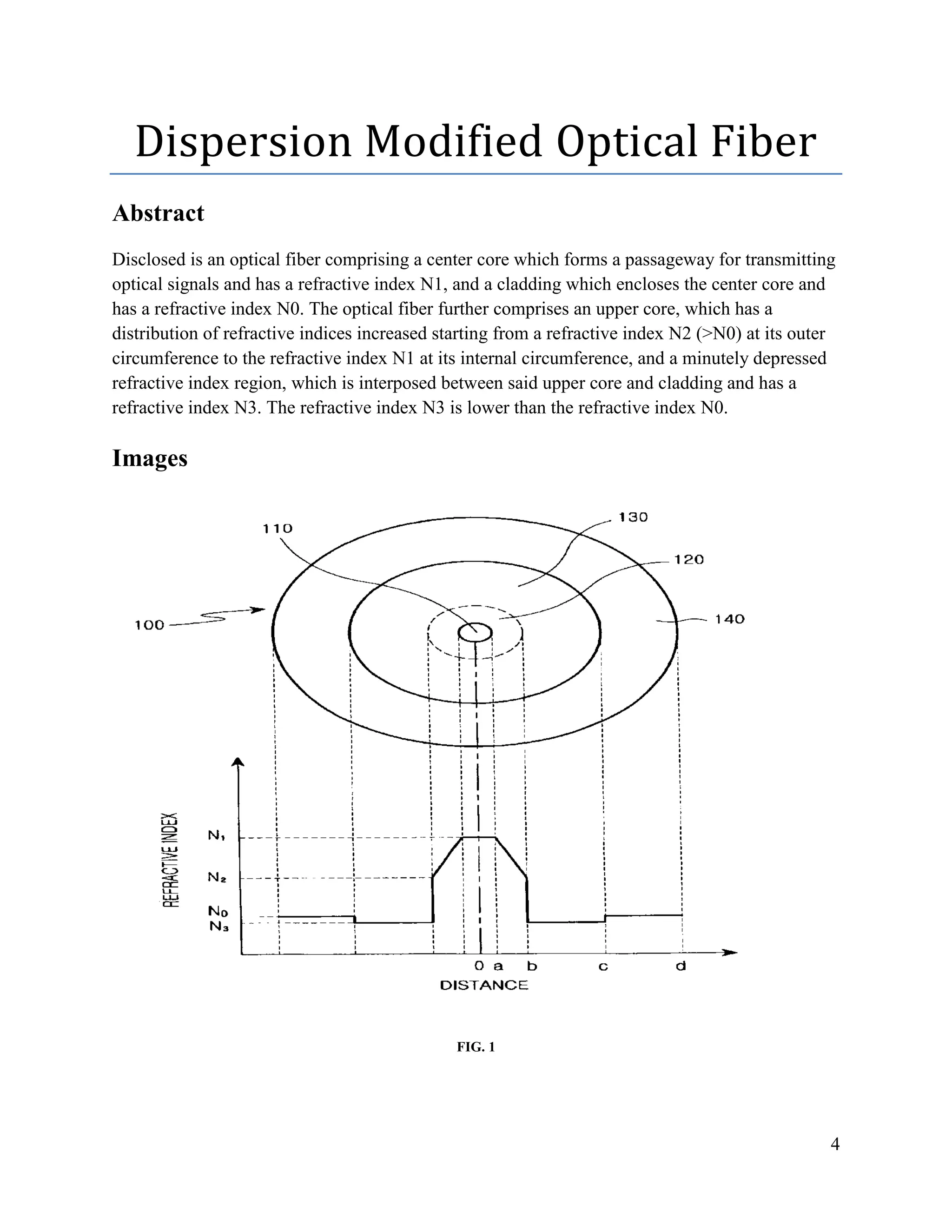The document details a novel dispersion-controlled optical fiber designed to enhance transmission capabilities while minimizing non-linear effects. This fiber features a complex structure with a center core, an upper core with varying refractive indices, and a minutely depressed refractive index region, allowing for a broad wavelength range and low-loss characteristics. The invention aims to improve upon the limitations of existing optical fibers by achieving suitable dispersion values for super-high-speed and broadband transmission.










![11
Reference
[1]
L. G. Cohen et al., “Tailoring zero chromatic dispersion into the 1.5 μm-1.6 μm low-loss
spectral region of single-mode fibres”, Electron. Lett. 15 (12), 334 (1979)
[2] M. A. Saifi et al., “Triangular-profile single-mode fiber”, Opt. Lett. 7 (1), 43 (1982)
[3]
B. J. Ainslie et al., “Monomode fibre with ultra-low loss and minimum dispersion at
1.55 μm”, Electron. Lett. 18, 842 (1982)
[4]
V. A. Bhagavatula and M. S. Spitz, “Dispersion-shifted segmented-core single-mode fibers”,
Opt. Lett. 9 (5), 186 (1984)](https://image.slidesharecdn.com/hassaanassignmentof-190421191057/75/Dispersion-Modified-Optical-Fiber-11-2048.jpg)